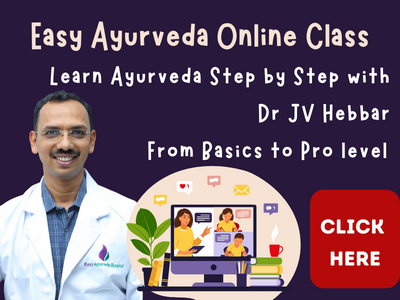Can We Reverse Heart Aging? – A Breakthrough in Cardiac Science and a Call for Prevention & Ayurveda Viewpoint
Article by Dr Manasa S, B.A.M.S & Dr Raghuram Y.S. MD (Ay)
Table of Contents
A New Frontier in Heart Aging: The Role of the Extracellular Matrix
Aging is a natural process — but what if science could slow it down, or even reverse it, especially in the heart?
A team of researchers from the National University of Singapore has discovered a novel way to investigate how the extracellular matrix (ECM) — the cellular “scaffolding” that surrounds heart cells — contributes to cardiac aging. Their findings may open the door to future therapies that can rejuvenate the aging heart.
“Our study looks instead at the ECM and how changes in this environment affect heart aging,” explains Dr. Jennifer Young, senior author of the study published in Nature Materials.
What Is the ECM and Why Does It Matter?
The extracellular matrix is a network of proteins and molecules between cells that provides structural and biochemical support. In the heart, the ECM influences:
– Tissue elasticity
– Cell signalling
– Healing and repair after injury
As we age, ECM becomes stiffer and more fibrotic, impairing the heart’s flexibility and function. This leads to diastolic dysfunction, reduced cardiac output, and a higher risk of heart failure with preserved ejection fraction (HFpEF) — a condition increasingly common in older adults.
Introducing DECIPHER: A Tool to Decouple Heart Aging Factors
To understand the role of ECM more precisely, the researchers developed a hybrid biomaterial called DECIPHER (Decellularized In Situ Polyacrylamide Hydrogel-ECM hybrid).
DECIPHER allows scientists to manipulate biochemical signals and mechanical stiffness independently — mimicking conditions of young and old heart tissue in various combinations.
Key Finding:
Young biochemical signals could counteract the negative effects of stiff ECM. But aged signalling — even with a soft, healthy ECM — led to dysfunction.
This suggests that the biochemical environment of aging cells is more critical than mechanical stiffness alone.
The Global Burden of Heart Disease: Why This Research Matters
Cardiovascular disease (CVD) remains the leading cause of death worldwide, claiming an estimated 17.9 million lives per year — nearly 1 in 3 global deaths, according to the World Health Organization (WHO).
Global Epidemiology:
– Coronary artery disease (CAD) is the most common type of CVD.
– More than 523 million people were living with cardiovascular diseases in 2019 (Global Burden of Disease Study).
– Low- and middle-income countries account for over 75% of CVD deaths.
– Aging populations have led to an increase in heart failure and arrhythmias even in developed nations.
The Aging Heart:
- Cardiac aging is a major contributor to rising healthcare costs.
- Stiffening of the heart and blood vessels increases risk for:
– Heart failure
– Atrial fibrillation
– Hypertension
– Stroke
Why it matters now
With global life expectancy increasing, more people are living longer — but not necessarily healthier. Addressing heart aging is essential not just for longevity, but for quality of life.
How to Protect Your Heart as You Age?
Evidence-Based Lifestyle Interventions
While advanced therapies are years away, science already supports powerful steps individuals can take to maintain a youthful heart.
Exercise: Strengthen Your Heart with Movement
– Fact: Regular physical activity reduces heart disease risk by up to 50%.
– Boosts circulation, reduces inflammation, and improves cardiac efficiency.
– Enhances endothelial function and arterial flexibility.
Guidelines:
– 150 minutes/week moderate intensity (e.g., brisk walking)
– Or 75 minutes/week vigorous intensity (e.g., running)
– Include strength training twice a week
Nutrition: Eat Smart for a Healthy Heart
Mediterranean and DASH diets are associated with significantly lower rates of heart disease.
Rich in:
– Fruits & vegetables
– Whole grains
– Lean proteins (esp. fish)
– Healthy fats (olive oil, nuts)
Low in:
– Saturated and trans-fats
– Excess sodium
– Processed sugars
A 30% reduction in cardiac events was observed in Mediterranean diet participants in the PREDIMED trial (2013).
Quit Smoking: Undo the Damage
Smoking increases the risk of CAD 2–4 times.
Benefits of quitting:
– Risk of heart attack drops by half in 1 year
– Matches non-smoker risk by 15 years
Get Quality Sleep: Your Heart’s Recovery Time
– Adults sleep less than 6 hours per night are at 20% higher risk for heart attacks.
– Sleep deprivation increases blood pressure, stress hormones, and arrhythmias.
Goal: 7–9 hours of quality sleep nightly.
Manage Stress: Calm Mind, Strong Heart
– Chronic stress contributes to high blood pressure, arrhythmias, and inflammation.
– Stress activates the sympathetic nervous system, increasing heart workload.
Tools:
– Meditation
– Breathing exercises
– Physical activity
– Therapy or support networks
Maintain a Healthy Weight and Waistline
– Obesity increases risk of hypertension, heart failure, and metabolic syndrome.
– Even a 5–10% weight reduction improves cardiovascular markers.
– Monitor waist circumference:
Women: <35 inches
Men: <40 inches
Limit Alcohol Intake
– High alcohol consumption is linked to high blood pressure, cardiomyopathy, and atrial fibrillation.
– Recommended limits:
No more than 14 units / week (approx 5–6 drinks)
At least 2 alcohol-free days per week
Routine Checkups & Screenings
Early detection is key:
– Blood pressure
– Lipid profile
– Blood sugar
– ECG, echocardiogram in high-risk groups
A coronary calcium score can help detect early plaque build-up, even in asymptomatic individuals.
Looking Ahead: A New Era in Heart Health?
The discovery of ECM’s role in heart aging marks a paradigm shift in cardiology research. By targeting the environment around cells — not just the cells themselves — scientists may unlock new ways to restore youth to the heart.
But until such therapies become available, our best defence is lifestyle-driven prevention.
Final Reflection
The heart is not just a pump — it’s a lifelong partner. And while it’s aging is inevitable, its decline doesn’t have to be. Through smart choices and scientific advances, we can protect, preserve, and possibly even rejuvenate the engine that sustains our lives.
Looking from Ayurveda perspective
The description given in the above said paragraphs is from a modern viewpoint and all modern viewpoints cannot be translated into Ayurveda language. But we can read in between the lines and create an Ayurveda hypothesis because Ayurveda interventions can become game-changers in reversing heart aging.
Looking at the makeover of ECM, it can be hypothetically said that ECM represents a part of Kapha Ecosystem. ECM does everything which falls into the territory of functions of balanced kapha. Heart is located in the Kapha zone. Uras or chest is one of the predominant sites of kapha and one of the key functions of kapha is to provide structural support and regulate cellular behaviour and also provide a buffer for smooth functioning of heart and lungs in the chest cavity.
Kapha is the water system of the body, but we also have the earth element (prthvi) along with water element (jala) forming the kapha matrix. So, the proteins, proteoglycans and other molecules and the fibrous proteins etc which form the ECM can be categorized into water or earth components of kapha.
All vata, pitta and kapha are involved in smooth conduction of heart functions, but the heart is majorly influenced by kapha, mainly the Avalambaka Kapha located in the chest cavity, which might represent the ECM of the heart.
Hyperactivity of vata and pitta can cause degenerative and inflammatory changes in the heart and its structures. Kapha provides a buffer against this. Kapha is also a supportive matrix which prevents the wear and tear of the heart caused by functional overload.
Decrease of kapha in the chest might increase vata and pitta, in elderly persons mainly because vata dominates the body and health in old age. Just like ECM, kapha too can get solidified when there is imbalance between the earth and water components of kapha and cause mechanical stiffness decreasing the functional capacity of the heart leading to many cardiac disorders. On the other hand, kapha may get influenced by increased vata and pitta and can dry or burn out. This leads to less support to the heart, this too leading to various heart ailments.
So, immaterial of one’s Prakriti, a balance of kapha and its relative balance with other doshas will guard the heart against premature ageing.
Below mentioned are some of the effective measures to prevent or reverse heart ageing
– Keep a check on kapha balance, eat kapha balancing foods and follow kapha balancing lifestyle activities
– Keep a check on vata and pitta and address their high-end fluctuations (pathological increase)
– Treat any long standing doshic disorders promptly, especially the chest disorders and digestive disorders
– Follow the principles of dinacharya and rtucharya religiously
– Keep away from high end emotions like grief, anxiety, stress, depression, greed, lust, anger, fear, jealousy etc. and create a happy life zone
– Exercise regularly, sleep well
– Eat good and healthy foods, follow food etiquettes always, avoid excessive or inadequate consumption of foods
– Keep a check on digestion (agni)
– Consume Hrdya foods – foods good for heart
– Practice Yoga, Pranayama and Meditation
– Try to live a Sattvika life
– Follow Sadvritta, Rasayana and Achara Rasayana therapies
– Take regular Panchakarma therapies to expel morbid doshas, malas and toxins
– Keep away from bad habits like madyapana – alcohol consumption etc.
The other components which take part and help in balance and health of ECM from Ayurveda perspective
– Healthy Rasa Dhatu and Rasavaha Srotas
– Ojas
– Udana, Prana and Vyana Vata
– Apana Vata and Sadhaka Pitta
– Shleshaka Kapha
– Hridaya Marma
– Manas
Symptoms related to disturbances in the above should be noted and addressed promptly.









